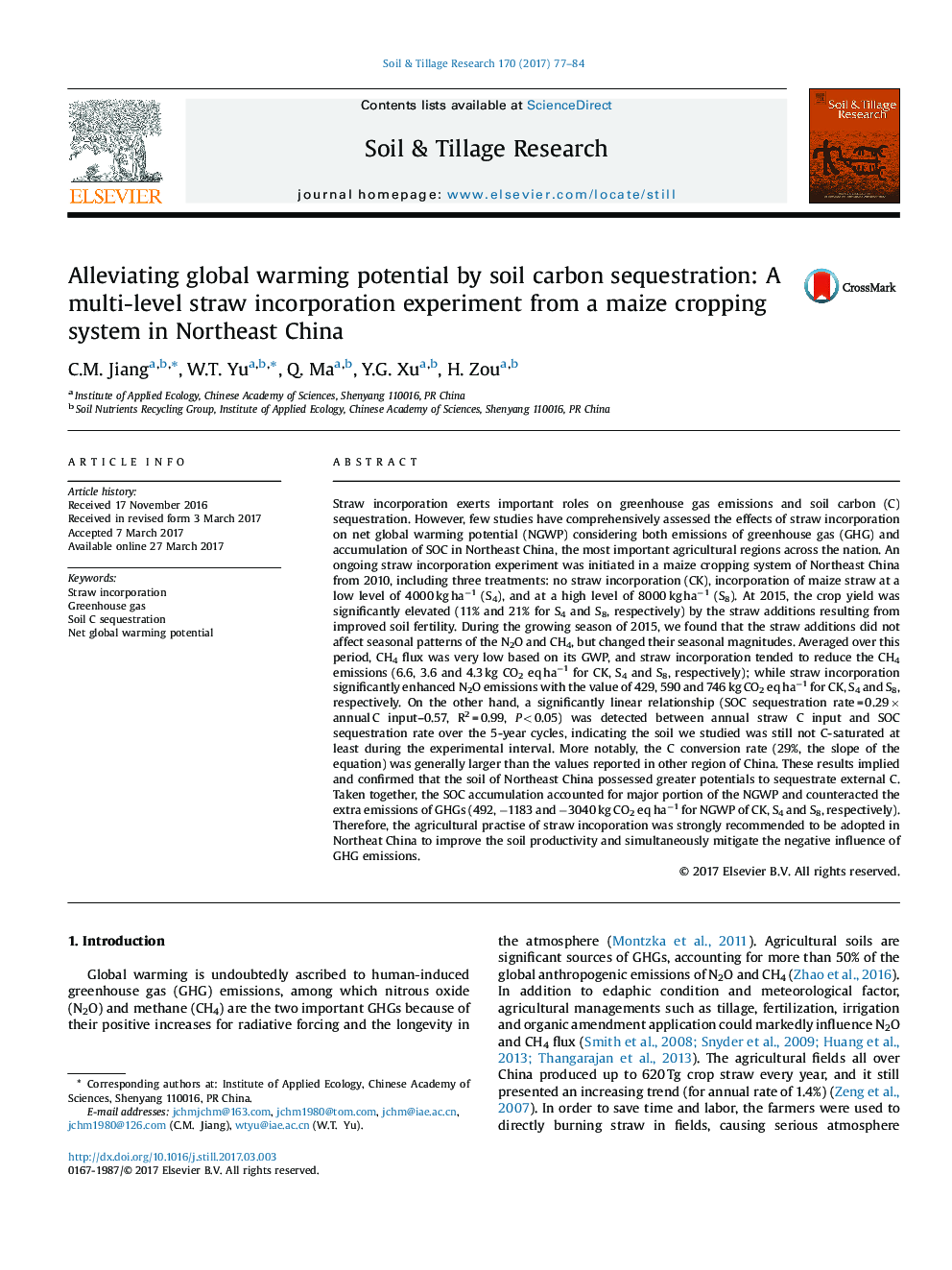| کد مقاله | کد نشریه | سال انتشار | مقاله انگلیسی | نسخه تمام متن |
|---|---|---|---|---|
| 4927517 | 1431833 | 2017 | 8 صفحه PDF | دانلود رایگان |
- Maize yield was significantly elevated after 5-year straw incorporation (SI).
- SI improved soil fertility and increased SOC accumulation.
- SI tended to reduced CH4 emission, but stimulated N2O efflux remarkably.
- The soil of Northeast China possessed great potential to sequestrate external C.
- SOC sequestration contributed significantly to net GWP, offseting the role of GHG.
Straw incorporation exerts important roles on greenhouse gas emissions and soil carbon (C) sequestration. However, few studies have comprehensively assessed the effects of straw incorporation on net global warming potential (NGWP) considering both emissions of greenhouse gas (GHG) and accumulation of SOC in Northeast China, the most important agricultural regions across the nation. An ongoing straw incorporation experiment was initiated in a maize cropping system of Northeast China from 2010, including three treatments: no straw incorporation (CK), incorporation of maize straw at a low level of 4000 kg haâ1 (S4), and at a high level of 8000 kg haâ1 (S8). At 2015, the crop yield was significantly elevated (11% and 21% for S4 and S8, respectively) by the straw additions resulting from improved soil fertility. During the growing season of 2015, we found that the straw additions did not affect seasonal patterns of the N2O and CH4, but changed their seasonal magnitudes. Averaged over this period, CH4 flux was very low based on its GWP, and straw incorporation tended to reduce the CH4 emissions (6.6, 3.6 and 4.3 kg CO2 eq haâ1 for CK, S4 and S8, respectively); while straw incorporation significantly enhanced N2O emissions with the value of 429, 590 and 746 kg CO2 eq haâ1 for CK, S4 and S8, respectively. On the other hand, a significantly linear relationship (SOC sequestration rate = 0.29 Ã annual C input-0.57, R2 = 0.99, P < 0.05) was detected between annual straw C input and SOC sequestration rate over the 5-year cycles, indicating the soil we studied was still not C-saturated at least during the experimental interval. More notably, the C conversion rate (29%, the slope of the equation) was generally larger than the values reported in other region of China. These results implied and confirmed that the soil of Northeast China possessed greater potentials to sequestrate external C. Taken together, the SOC accumulation accounted for major portion of the NGWP and counteracted the extra emissions of GHGs (492, â1183 and â3040 kg CO2 eq haâ1 for NGWP of CK, S4 and S8, respectively). Therefore, the agricultural practise of straw incoporation was strongly recommended to be adopted in Northeat China to improve the soil productivity and simultaneously mitigate the negative influence of GHG emissions.
Journal: Soil and Tillage Research - Volume 170, July 2017, Pages 77-84
